
Is Colombia Safe for travel? 2022 INSIDER GUIDE
Is Colombia Safe for travel? 2022 INSIDER GUIDE
In previous decades, Colombia was considered one of the most dangerous countries in the world, but today it’s another story. With a BOOMING tourism sector, Colombia is now a popular eco-tourism destination with beaches, rainforests, mountains, and an enormous history to get stuck into.
But it is true that Colombia was once rife with violence. Even as late as 2002 it had one of the highest homicide rates in the world. And though the civil war finally ‘officially’ ended in 2016, drug trafficking and militias are still active. So we don’t blame you for wondering, “is Colombia safe?” “Just how dangerous is Colombia?”
Don’t worry. We really are going to make sure you know the full story when it comes to staying safe in Colombia. We’ve written this guide for safe travel in Colombia because we at The Broke Backpacker believe you should be able to have an amazing time AND stay safe whilst doing it!
We’re going to cover a load of different topics. We’ll look at whether or not it’s safe to use the metro in Medellin (spoilers: YES), if the food in Colombia is safe, whether or not you should relocate to Colombia altogether, and just about everything else in between. There will even be a special section including travel tips for female solo travelers as well.
So whether you’re worried about backpacking through Colombia long-term or if you’re just worried about an upcoming two-week trip, it’s ok. We’ve got you! Whatever you’re worried about, our guide will answer your questions.
How Safe is Colombia? (Our take)
So is it dangerous to backpack Colombia? When it comes to safety in Colombia you might think of Pablo Escobar and episodes of Narcos, but today Colombia is relatively safe to visit. Come for the rainforests, the history, the beaches, but at the same time don’t expect it to be the safest place in the world.
Petty theft (mugging and pickpocketing) is still an issue and there are still volatile areas where it’s advised you shouldn’t go. Crime rates remain quite high and there are even armed militias involved in the drugs trade. Kidnappings still occur to this day and even landmines are an ongoing issue. Needless to say, security situations can change pretty quickly.
Spiking’s with Scopolamine are pretty common in Bogota and tourists are often targeted. Do not EVER accept drinks or cigarettes from strangers.
Then there’s the nature; earthquakes occur regularly, intense rain can cause landslides in the Colombian Andes, and there are dangerous critters lurking in the jungles and hills. If you’re afraid of snakes, bad news – Colombia has heaps of them.
However, that doesn’t keep the tourists away, nor backpackers, and it shouldn’t keep you away either. Tourism is BIG news here and in recent years is contributing to the wealth of the country.
So let’s go deeper into exactly why Colombia is safe to visit these days….
There is no such thing as a perfect safety guide, and this article is no different. The question of “Is Colombia Safe?” will ALWAYS have a different answer depending on the parties involved. But this article is written for savvy travellers from the perspective of savvy travellers.
The information present in this safety guide was accurate at the time of writing, however, the world is a changeable place, now more than ever. Between the pandemic, ever-worsening cultural division, and a click-hungry media, it can be hard to maintain what is truth and what is sensationalism.
Here, you will find safety knowledge and advice for travelling Colombia. It won’t be down to the wire cutting edge info on the most current events, but it is layered in the expertise of veteran travellers. If you use our guide, do your own research, and practise common sense, you will have a safe trip to Colombia.
If you see any outdated information in this guide, we would really appreciate it if you could reach out in the comments below. We strive to provide the most relevant travel information on the web and always appreciate input from our readers (nicely, please!). Otherwise, thanks for your ear and stay safe!
It’s a wild world out there. But it’s pretty damn special too.
Is Colombia Safe to Visit Right Now?
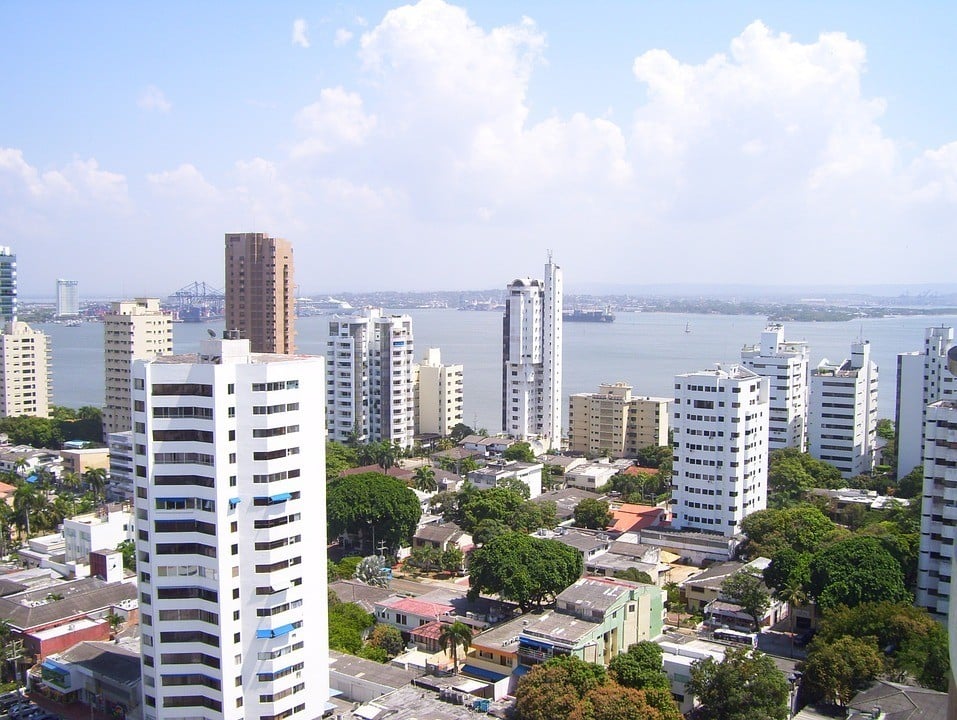
Colombia is a blend of the old and new, and of the rich and poor.
So is it safe to travel to Colombia then? Regardless of the status of travel advisories, Colombia is the new darling of South American travel. The country has been ‘rediscovered’ despite many critics telling you that it was unsafe to visit Colombia. Today, Colombia is statistically safe to visit.
Colombia has one of the fastest growing tourist markets globally and is outpacing tourism in other Latin American countries. It’s hard to argue with the millions of tourists who visit here and leave totally unaffected by any issues in Colombia.
A lot of the real danger is basically around the frontiers near Ecuador, Panama, and Venezuela. Drug traffickers are still very active in these areas so it may be unwise to go near them.
Sticking to the main routes or going on organized tours is probably the best way to NOT encounter any trouble. For instance, if you plan on visiting the Lost City in the Sierra Nevada de Santa Marta, you will have to book a tour.
Political protests are common in Colombia. As in any country that isn’t your own, avoiding protests and demonstrations is the thing to do if you want to avoid injury or detention. At the end of the day, more remote areas = more rebel group activity = more chance of trouble. You may be backpacking, but sticking to the tourist routes is probably your safest bet right now.
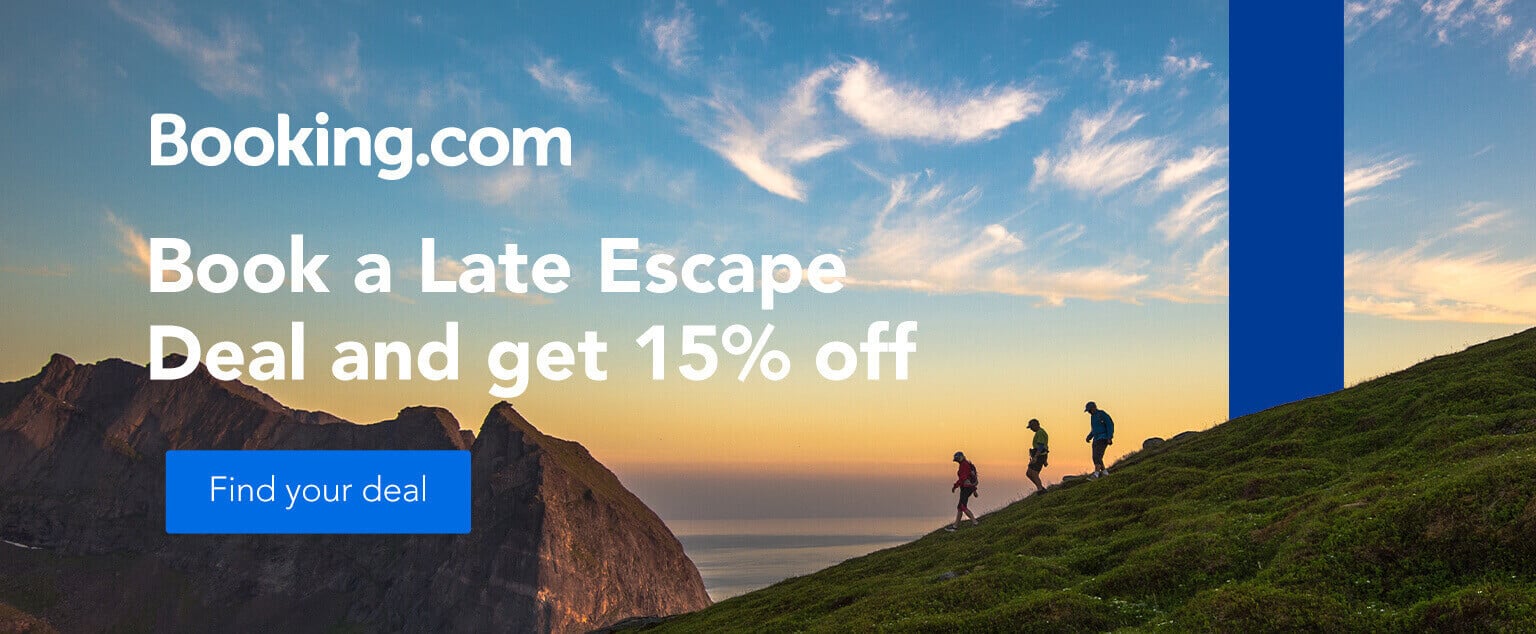
Safest Places in Colombia
When choosing where you’ll be staying in Colombia, a bit of research and caution is essential. You don’t want to end up in a sketchy area and ruin your trip. To help you out, we’ve listed the safest areas to visit in Colombia below.
Quick side note: all of these areas we’re going to list below can be very dangerous if you act careless. To stay safe, stick to our safety tips and use your travel common sense. Don’t let the news and prejudices about those cities stop you from visiting. They can all be visited safely.
Cartagena
History, tropical beaches, and beautiful people. Just a few things that come to mind when thinking about visiting the cultural hotspot city Cartagena. Nestled on Colombia’s Caribbean coast, it’s an old port city that has long been important for the import and export of goods.
Whether you want to explore the historical walled city, get a taste of Colombia’s legendary nightlife, or base yourself near the Caribbean, there is something in Cartagena for you.
The best area to stay in Cartagena is the hipster and expat paradise Bocagrande. As one of the most expensive areas in the entire country, let alone Cartagena itself, this area is home to gated communities and wealthy Colombians. This also makes it one of the safest places in Cartagena, since there are CCTV cameras and security guards everywhere.
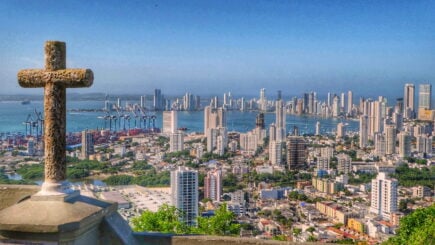
Cartagena (Bocagrande)
Cartagena can actually be a very safe place to visit, especially if you choose the right area. A very wealthy but also very secure area is Bocagrande. It’s a great family and expat heaven.
Bogota
Galleries and museums galore, a historic centre that’s well worth a look, vibrant culture and a ton of good food – it must be Bogota, the high-altitude capital of Colombia. This is definitely a cool city that will keep you busy for longer than you’ve got there!
Whilst it’s interesting and exciting, crime still is a problem here. Though Bogota has put its worst days of murder and violence behind it, the city still retains a lot of street crime, gangs, and drug trafficking. Luckily, you can avoid these issues by staying in the right area. And in this case, it’s Zona Rosa.
Zona Rosa is the dedicated nightlife area with tons of bars, clubs, restaurants, and a heavy police presence. This makes it to one of the safest areas in Bogota. This is where you’ll find most Bogotanos hanging out on the weekends or congregating after work.

Bogota (Zona Rosa)
Bogota might have a shitty reputation, but the city has overcome the main issues. When visiting, stay in Zona Rosa, the safest area in Bogota. Party the night away without having to worry too much.
Medellin
Just like the safety in Colombia overall, Medellin’s has definitely calmed down. In 1993, when Pablo Escobar was out of the picture, things began to turn around in the city. Crime has pretty much plummeted in general and, in fact, Medellin is safer than some American cities.
It’s important to note that gangs still operate in the city, with an estimated 240 gangs with around 5,000 members overall. That’s still QUITE A LOT for one city. However, you’re unlikely to get targeted, as gang violence is typically inter-gang.
A great area in Medellin is the Laureles Neighborhood. It may not be the most famous neighbourhood in Medellin, but it’s our recommendation for the safest place in Medellin. It’s quieter and more pedestrian friendly than other parts of the city while still being within easy reach of the hustle and bustle.

Medellin (Laureles neighborhood)
Medellin is working hard on its reputation and it’s paying off. To stay extra safe in the city, choose the Laureles neighborhood. It might not be as cool and popular as other tourist hotspots but it has a very laid back and relaxed vibe.
Places to avoid in Colombia
It’s pretty clear that not all places in Colombia are safe. While you need to be careful and aware of your surroundings pretty much anywhere you go in the world, there are actually a few areas that you should completely avoid. To help you have a safe trip, we’ve listed the no-go areas below:
- Cali (Santiago de Cali) – Cali is known to be Colombia’s most dangerous and violent city. While you COULD visit it, your overall safety will shoot up if you decide to stay away. It’s not worth the risk and you’ll be better off visiting other, safer areas.
- Central Medellin – While Medellin can be a safe destination for travellers, it really pays off to avoid central Medellin. It’s ruled by gangs and drugs, so we really recommend staying away.
- Barranquilla – this city has one of the highest mirder and violent crime rates. Unless you want to put your life at risk, don’t visit!
Other areas that you should double-think about before visiting are: ANYWHERE at night in the less touristy areas in Bogota and Buenaventura, District 4 in Soacha, Arauca.
It’s important to know that you CAN be safe in Colombia, but you really need to do some research before you start your travels. As long as you avoid the places we’ve listed above and keep your wits about you, you can have a great trip and stay safe. A bit of caution always goes a long way!
Colombia Travel Insurance
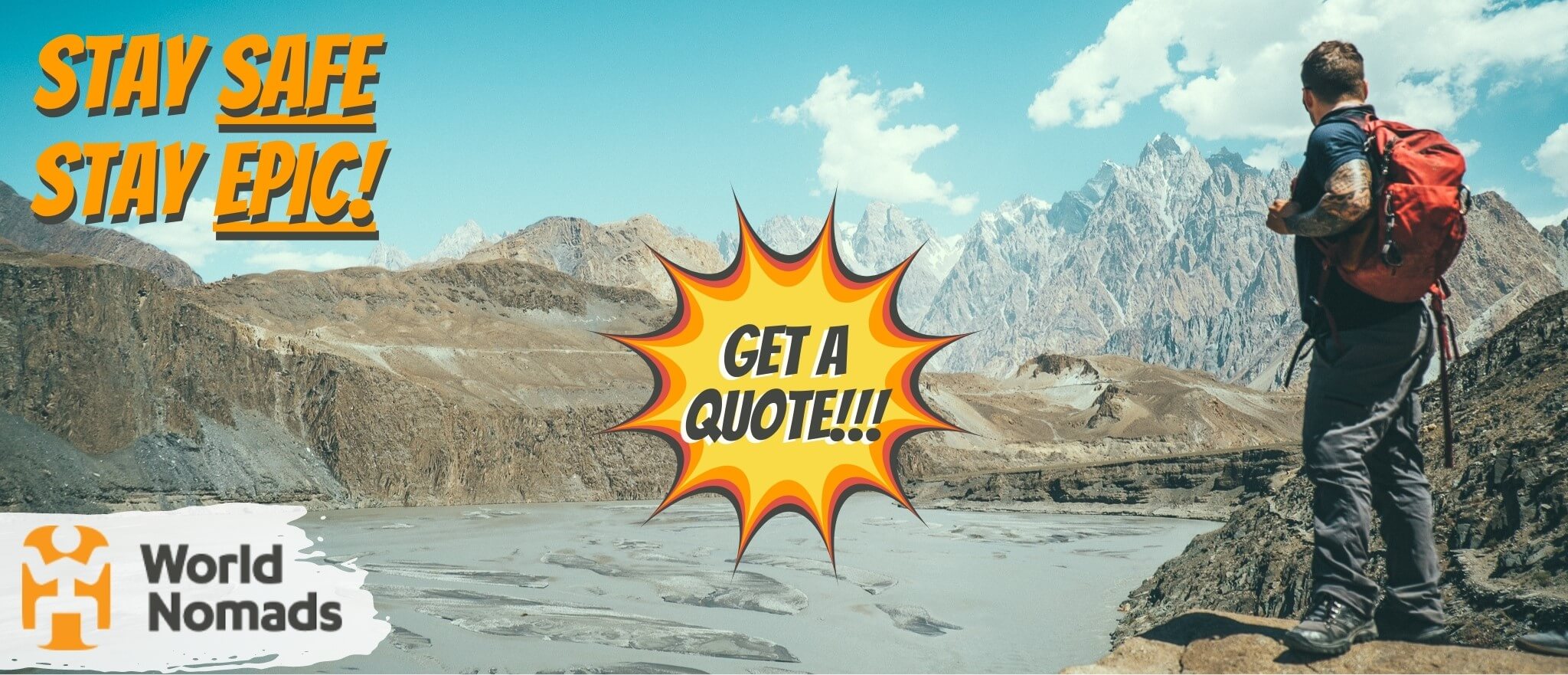
It’s good to get lost sometimes, but it’s also good not to get too lost. There are people that want you home in one piece.
There’s one travel insurance provider The Broke Backpacker trusts for all his wildest shenanigans… World Nomads!
Click the button below to get a quote on your insurance or read our in-depth review of World Nomads’ coverage. And then… let the shenanigans begin.
19 Top Safety Tips for Traveling to Colombia
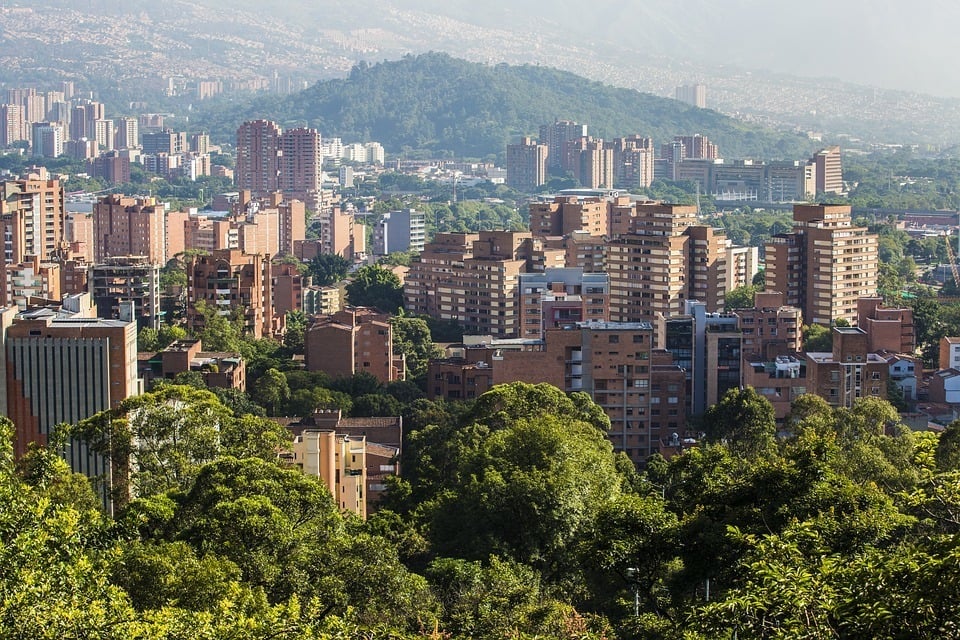
Colombia is not as scary as the media makes it out to be.
Most visits to Colombia are trouble-free. But there’s no harm in knowing a few safety tips for Colombia to really make sure that you have a blast in this amazing country. So here are a few insider tips for staying safe in Colombia.
Here are our top Colombia safety tips;
- Keep up to date with the news in your local area – security issues can change from day to day and can from safe to bad, real quick.
- Don’t show cash, wear jewelry, flashy clothes – if you look rich, you’re a winning ticket for a potential thief.
- Carry a decoy wallet – it’s best to have a few pesos in a crappy wallet. Muggers can become frustrated if you have nothing. Hide your real cash in a money belt.
- Say no to illegal cabs – no, no, no, no. Nope. Never a smart move.
- Don’t use ATMs after dark – it’s a no-brainer but thieves operate best at night and ATMs are the perfect spot.
- Carry a copy of your passport and visa – local cops don’t get paid a lot and have been known to hassle tourists who don’t have their passport, etc. Keep a copy and save yourself having to bribe them.
- Learn some Spanish – this will get you far. From conversing with people to simply getting around – it helps.
- Split your cash up – unless it’s happened to you, you have NO IDEA what a headache it is to lose all your money at once.
- NO DRUGS – why get mixed up in all that? Be responsible.
- Ignore ‘plainclothes police officers’ – these are people masquerading as police officers and are just after your money.
- Watch your belongings in crowds – an easy place for pickpockets to get some easy cash.
- IF someone wants to rob you, don’t resist – your money, or your life – seriously not worth it.
- Be aware that distraction techniques do happen – “Look at this!”… then whilst you do, boom – your pocket’s been picked. Ignore them.
- Go with a well-reviewed guide on treks – they’ll know where to walk and will spot the venomous snakes that you’d step on.
- Know your limits, drink-wise – getting dead drunk can also get you robbed, assaulted, or worse.
- Male or female, don’t walk around by yourself at night – get a cab and save yourself from quite likely danger.
- Ask for prices before you accept a service – that way you can avoid coughing up massive amounts after a so-so tour.
- Don’t accept drinks or cigarettes from strangers – just politely turn them down. Spiking’s are pretty common.
- Keep an eye on the weather – inclement weather can more than just put a dampener on a day with landslides being quite common.
By following our safety tips for Colombia you’ll get to have a blast whilst staying safe. Isn’t that the best way to do it? Remember: it all comes down to traveling smart so you can travel without having to worry.
Insider Safety Tips from the Broke Backpacker Team
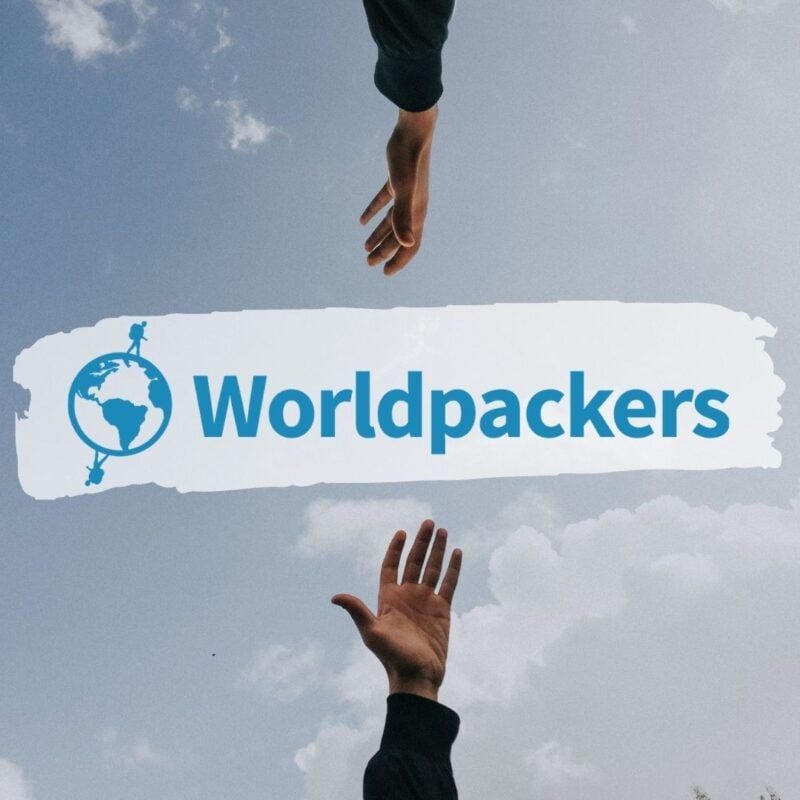
Worldpackers connects travellers with hostels, schools, NGO’s and many more for work exchange opportunities. Chat with your host before you arrive to have a soft landing and then experience your destination differently! Local connections make your trip a lot safer – and open up a whole new culture experience.
Worldpackers trips are insured! They’ll help you find a new host and cover up to 7 nights in a hostel so you’re not left on your own if a host falls through.
Use the discount code BROKEBACKPACKER for a $10 discount. Plus, get 3 free months on your membership during their summer promo!
Is Colombia safe to travel alone?
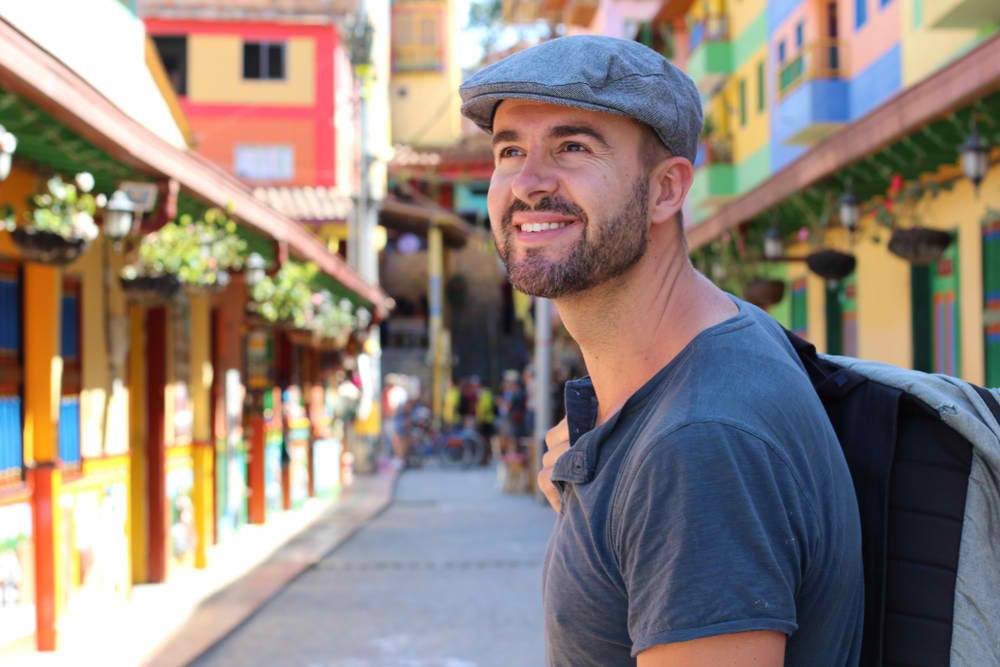
Colombia is safe to travel alone. However, that doesn’t mean you can wander around the country without a care in the world. And we’ve got a few tips to keep in mind when you travel by yourself to Colombia. Here are some more Colombia travel safety tips.
- The best way to beat the “solo traveling blues” whilst you’re on the road is to meet other travelers. Staying in good, sociable hostels in Colombia, or going on organized tours, is the best way to do this. Plus you can share travel tips and stories, too.
- If you do go on a tour – research. The best tours are where you’ll meet the best people and get the best information.
- Try not to stand out like a wealthy tourist. Just have a look at what other people are wearing in whatever area you’re in. Maybe a singlet and short shorts isn’t always a good idea, is what we’re saying.
- Your SLR camera dangling around your neck might not work either…
- The same goes for talking loudly – shouting around in English (or your native language) is going to make you stand out like a BEACON.
- Get some Spanish in your brain. If you’re lost, this will help you become un-lost. If you want to meet some locals, this is the best way to do so. Learning at least a little bit of Spanish will go very, very far.
- Don’t listen to fear-mongering stories. Use your common sense, follow our travel tips, be smart, but also remember that Colombian people are basically REALLY friendly in essence. Tourism is still in its infancy here meaning people will be happy to see you and chat with you (which is why Spanish helps).
- Ok, so there may be travel warnings against border areas, but that doesn’t mean you should stick to the cities. Head out into nature, see the smaller towns, just be aware of local security situations, weather reports and travel warnings. As long as you stick to where other backpackers are heading, you’ll be fine.
We’re confident that Colombia is safe to travel alone in. It might not be the best place for a nervous first-time solo traveler, but if you’re smart and flexible, you’ll be better prepared. Get ready for an amazing new experience and to be welcomed into a vibrant society before the tourist scene truly explodes!
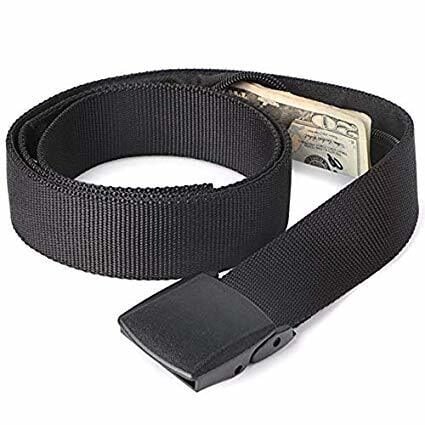
Get your cash stashed with this awesome Pacsafe money belt. It will keep your valuables safe no matter where you go.
It looks exactly like a normal belt except for a SECRET interior pocket perfectly designed to hide a wad of cash or a passport copy. Never get caught with your pants down again! (Unless you want to.)
Is Colombia safe for solo female travelers?
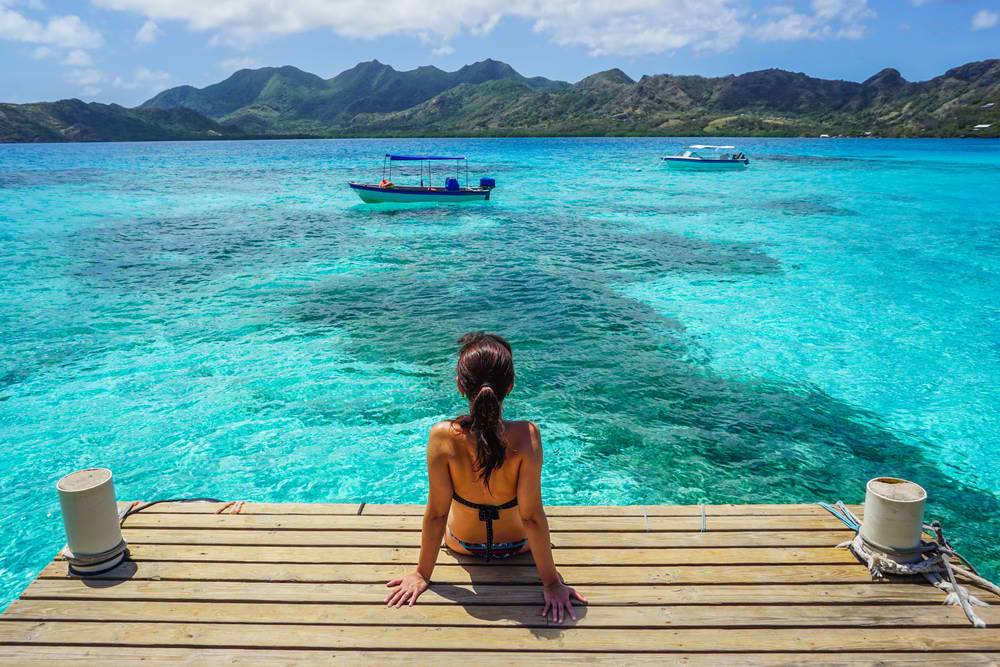
Well we’ve established that Colombia is safe for solo travelers. But when it comes to being a female solo traveler, there are always a different set of rules to live by. Sad but true.
We think everyone, regardless of their gender, should be able to travel where they want. For that matter, a lot of women, despite audible concerns, travel to Colombia anyway. It may not be the safest places in the world to visit for women, it may be overlooked as a destination for women all-together, but women do travel to Colombia alone.
- Colombia is still pretty much a macho society. Expect catcalls as they are an accepted behavior in Colombia. Instead of getting upset, which will just ruin your time, just ignore it, walk by, and be confident. This is part of the culture and society you’re visiting and reacting won’t make it any better.
- It’s sensible to dress according to the destination. Medellin = modern. The rural Colombian countryside, however… is not. You might want to cover up. Even if it’s for comfort – wearing sensible clothes on a trek makes sense.
- It’s a smart idea to get a sim card. Keep in touch with your family back home.
- Do your research before you arrive at your destination, or even before you plan going there. Are there security concerns? Does the hostel you’re staying at have a lot of good reviews? A female-only dorm? Good planning is 99% of staying safe.
- Drinking too much is an easy way to make poor judgments, get yourself into bad situations, and to end up hanging around with people you wouldn’t normally think were “ok”.
- Remember: most of the serious crime you hear about is gang-related i.e. gangs attacking other gangs.
- Take taxis but don’t just hail one. Download a taxi app, get your hostel to call you one, anything that allows you to know the company and driver. Whatever you do don’t just get into a random cab.
- Don’t put anything into your pockets. If it looks like there’s something in there, it will most likely be pickpocketed. And on a similar note, don’t leave your bag on the floor – even if it’s literally right next to you.
- If something does happen (bag stolen, etc.) in a tourist area make a fuss. When somewhere like La Candelaria in Bogota where there are lots of tourist police, shouting and making a fuss will alert people nearby and likely spook any would-be thief. Tourism is important for Colombia, and they want to make sure you don’t leave with any bad stories to take home with you.
- Watch out for your drink. Spiking happens and the best way to avoid this is to always be holding (and keeping an eye on) your beverage.
- Try not to look lost. It’s a good way to look like a tourist and therefore a target – to some, at least.
- At the same time don’t be afraid to ask for help. Colombians are very friendly and if you’ve hurt yourself, need directions or even advice, chances are there will be a whole load of people not only willing but happy to help you.
Fear not – Colombia is safe for solo female travelers. It’s not an IDEAL place, that goes without saying, but it is a fascinating and enriching country to visit. You’ll be more overwhelmed by culture and kindness than drugs and dodgy situations. It’s important to be smart though, so follow our tips and do your best to stay safe!
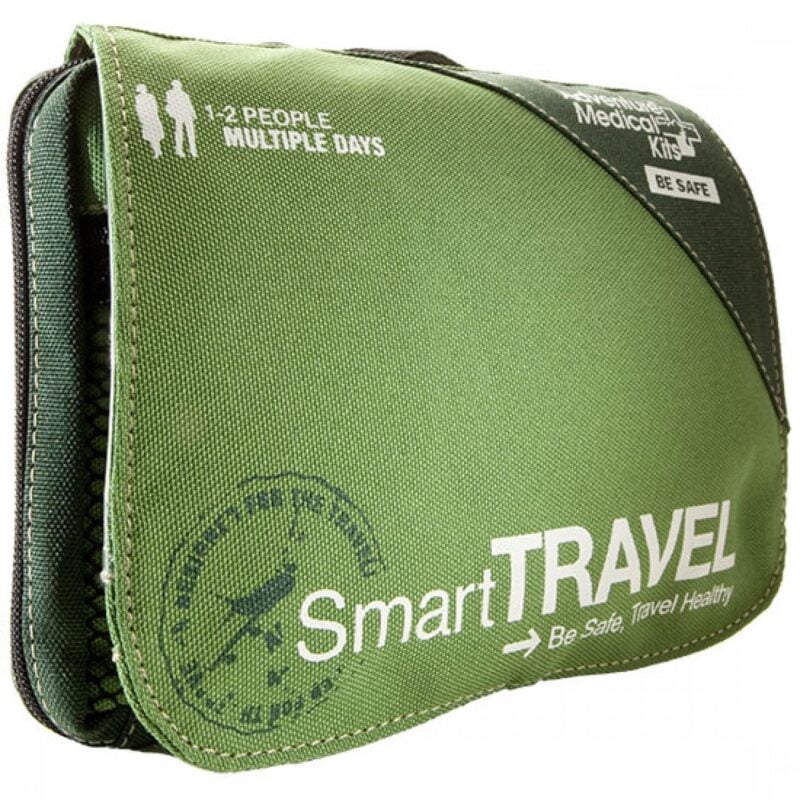
Things go wrong on the road ALL THE TIME. Be prepared for what life throws at you.
Buy an AMK Travel Medical Kit before you head out on your next adventure – don’t be daft!
More on Safety in Colombia
We’ve covered the main safety concerns already, but there are a few more things to know. Read on for more detailed information on how to have a safe trip to Colombia.
Is Colombia safe to travel for families?
Is it safe to go to Colombia with your kids? Maybe you’ve watched too much Narcos, but if you’re thinking this is a drug-riddled war-zone, you couldn’t be more wrong. It’s not easy, but most definitely Colombia is safe to travel for families.
All sorts of tourists are heading to check out the hidden-in-plain-sight gem that is Colombia. Everybody’s welcome and that goes for families too.
Colombia is a country on the up. The arts and literary scenes are flourishing, tourism is booming, and you’ll be happy to know that Colombian culture is family oriented. There’s you as an individual – and then there’s the family as a whole, which is usually the center of a Colombian person’s life.
On top of that, family-friendly activities and adventurous outdoor exploration abound. You can spend nights in a jungle treehouse, play around on beach havens, and trek through cloud forests, amongst other things. Every Sunday in Bogota, 75 miles of road in the city center is shut down to motor traffic (ciclovia) so people can bike and walk freely. Join the locals and rollerblade, cycle, walk or otherwise enjoy this idyllic traffic free day!
Without a doubt, Colombia is safe for families to travel. Take all the usual precautions that you would when traveling with children (medication, snacks, first aid kit, etc. etc.) and you’ll all have an unforgettable time.
Is it safe to drive in Colombia?
Colombia isn’t exactly the number one destination for a road trip. Thanks to the drugs trade, Colombia previously wasn’t safe to drive in. However, since most highways were cleared of rebel groups, things are looking up.
Still, if you’re planning on embarking on a road trip of Colombia, we would advise taking extra precaution when choosing where exactly you’ll be driving. Only taking routes between well established ‘tourist towns’ is the best bet. Anything else, and especially more remote, rural roads, will put you at risk of being pulled over, questioned, or worse.
The condition of the roads depends on where they are. There are relatively flat roads on the Caribbean coast, winding routes in the Colombian Andes, and jungle tracks everywhere in-between. All in varying degrees of repair and disrepair.
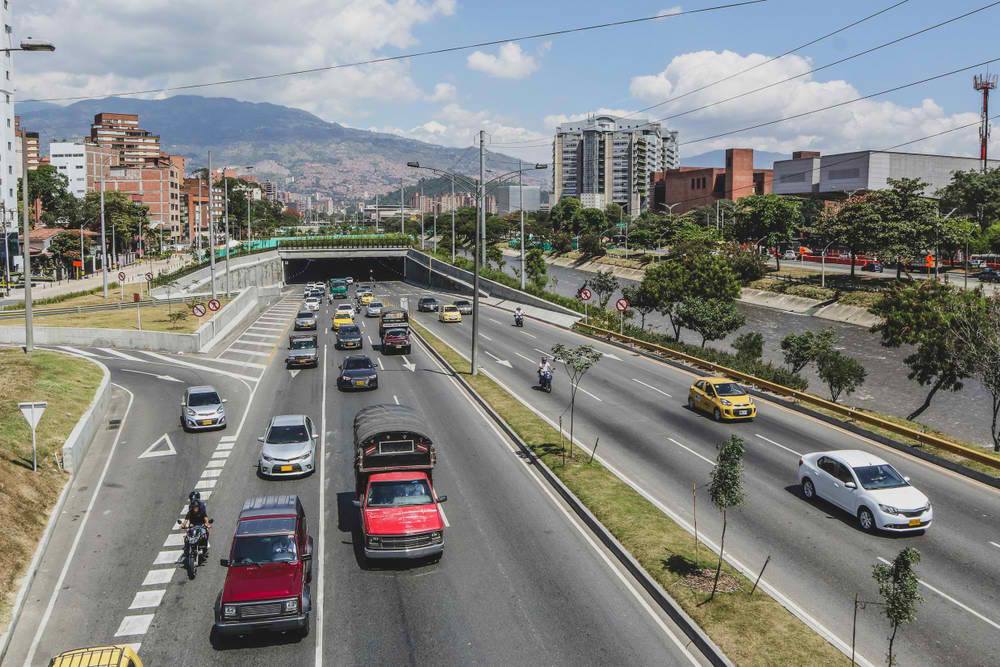
It almost goes without saying but don’t drive at night. This isn’t just because of dodgy people (by which we mean militias), but also because of things like cows in the road, hairpin turns on mountain routes, landslides, or other hidden hazards. Just don’t.
When it comes to renting a car in Colombia there are a few things you should bear in mind. Don’t expect luxury. The cars you’ll be able to rent aren’t going to be the best in the world. Far from it.
You’ll also have to be 23 years old if you want to rent. Plus, you need to be able to speak some Spanish to help you navigate (“Where is the petrol station?” – “How far is it to X?”). A bit of research on the road signage in Colombia wouldn’t go amiss either.
If we’re being honest, we don’t think that it’s totally safe to drive in Colombia, yet. Unless you’re hellbent on it or you’re a super confident driver, it’s probably not worth the stress. Local drivers can be crazy, there are often things in the road, mountain passes are filled with slow-moving traffic, and let’s not even talk about the cities.
Is Uber safe in Colombia?
Yep. Uber is safe in Colombia. Available since 2013 (beginning in Bogota where taxis were/are notoriously bad) and in most major cities, it’s probably one of the safest ways to get around.
You can avoid A LOT of hassle by taking an Uber, and won’t have to worry about the stresses of public transport or scams or illegal taxis. You order, get in, know where you’re going, pay, leave. Simple as that. The review system means service and safety is the selling point of Uber in Colombia, not the price point.
One note: you might be asked to sit in the front seat. Don’t be alarmed. The driver is just protecting themselves from being seen as an Uber by ‘traditional’ taxi drivers who, like most places in the world, oppose Uber.
And speaking of taxis…

Sleep safe! Choose your hotel, hostel or Airbnb ahead of time so you’re not last-minute booking a less-secure place.
You’ll find our favorite accommodation sorted by neighborhood in the following guides:
Are taxis safe in Colombia?
When using taxis in Colombia, it is very important to use them correctly as a lot can go wrong. One day you might hop in a perfectly normal, cheap taxi that takes you from A to B. Another day you might step into a car with a driver masquerading as a taxi who will rob you. These taxis, obviously, are illegal.
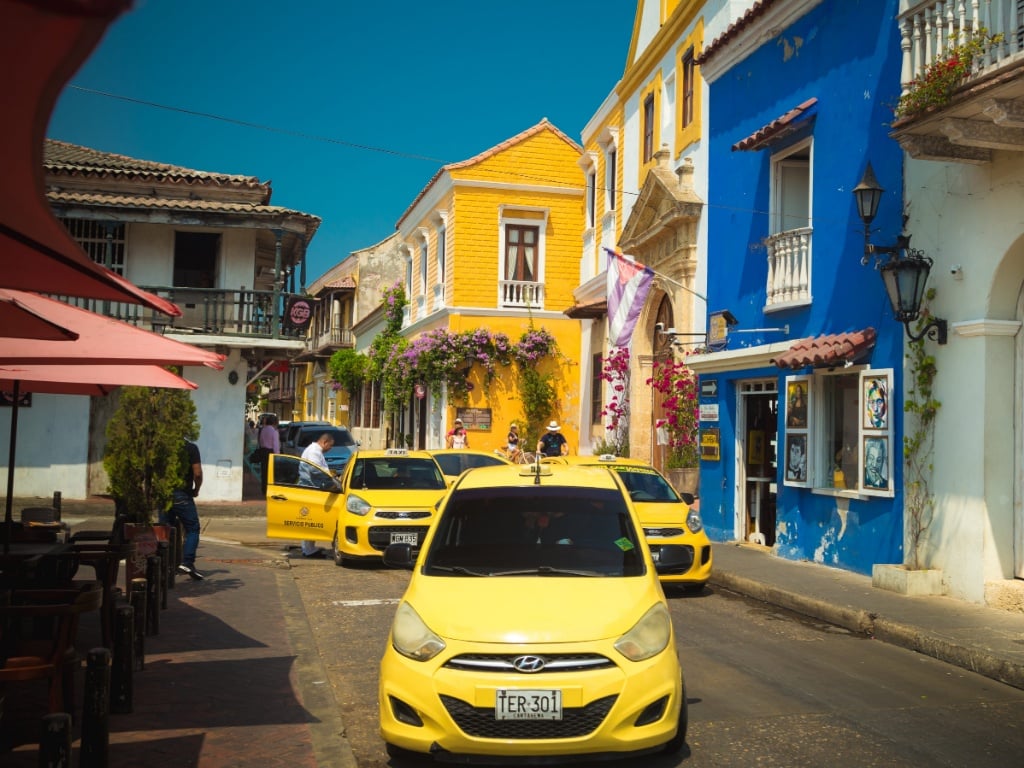
Taxis CAN be safe in Colombia, mainly by taking a few precautions.
- Number one rule: don’t hail a taxi off the street. Pretty much 10/10 these will be illegal, a scam, a robbery waiting to happen. Don’t bother.
- Real taxis you’ll find at taxi ranks outside shopping malls and hotels (in cities anyway). They’re usually very cheap.
- Don’t fall asleep in a taxi. The driver could just drive around hiking the meter up before getting you to your actual destination.
- Since there have been so many issues with taxis in Colombia, always take a photo of the number plate and/or the driver’s ID. You might even want to make a fake call (even better if you do it in Spanish) telling someone that you’re in a taxi and what the license number is.
- Downloading an app called Tappsi is a good way to make sure you’ll be stepping into a real taxi. You’ll know the car’s registration and driver’s ID and they’ll know where you’re going. Plus the journey’s logged.
At the end of the day, taxi safety (or lack of) in Colombia is the reason why Uber has become so popular. Best to just stick to the latter.
Is public transportation in Colombia safe?
Traveling on public transport in Colombia is nowhere near as dangerous as it once was. Nowadays it’s used by pretty much everyone, even tourists.
Other than the metro in Medellin (more on that in a bit), there are no public train services in Colombia. The only way to travel around by train in Colombia is what’s known as the Turistren – yes, tourist train – which runs between Bogota and Zipaquira. It’s safe to travel by train in Colombia this way because it’s for tourists and tourists are good for business.
Bus travel is a lot more common in Colombia. There are loads of different companies, with varying levels of quality service and comfort, so do your research.
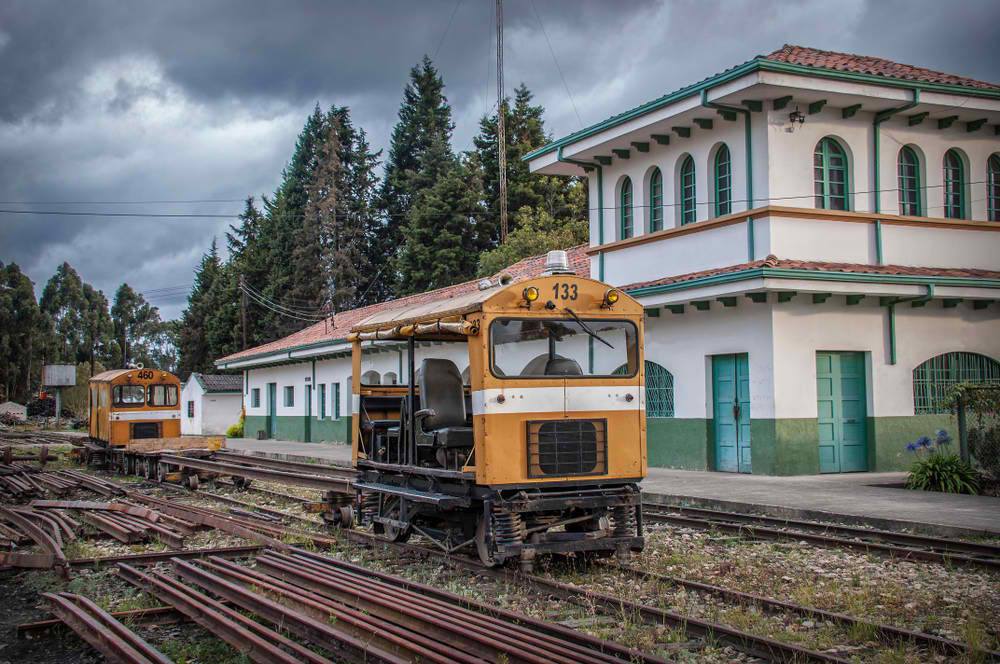
Worried about night buses? Don’t be. They’re safe in Colombia. Again – do your research. An onboard toilet and reclining seats are likely to be a more a comfortable option, especially if you’re traveling long distance.
Hop on a colectivo (or any kind of minibus) if you don’t need to travel too far a distance. These are relatively safe, a good way to soak up some local life, AND cheap.
Alternatively, there are domestic airlines plying routes between various cities in Colombia. Air travel is safe in Colombia, so if you don’t mind the carbon footprint, and you’re on a short trip, opting for air travel is fine.
Bogota is the largest city in the world without a metro system. It does, however, have a good bus system called TransMilenio. Prepare for overcrowded, but mercifully air-conditioned rides around the city with around 20 minutes waiting time (on average). Watch your belongings as any crowded situation is good for pickpockets.
Overall, and surprisingly, public transport is safe in Colombia.
Use Bookaway to find the best deals on transport – buses, planes, trains, and ferries. It’ll save you a load of time when organising transport and you’ll probably nab an EPIC DISCOUNT too!
Book your transport on Bookaway NOW. Get the best price for the best ride… then use those savings to buy the best feed in town!
Is the food in Colombia safe?
Colombian food is delicious. It’s all huge piles of rice, potatoes, pork, big meals, heavy ingredients, sweet desserts and a whole load of local specialties to dive into.
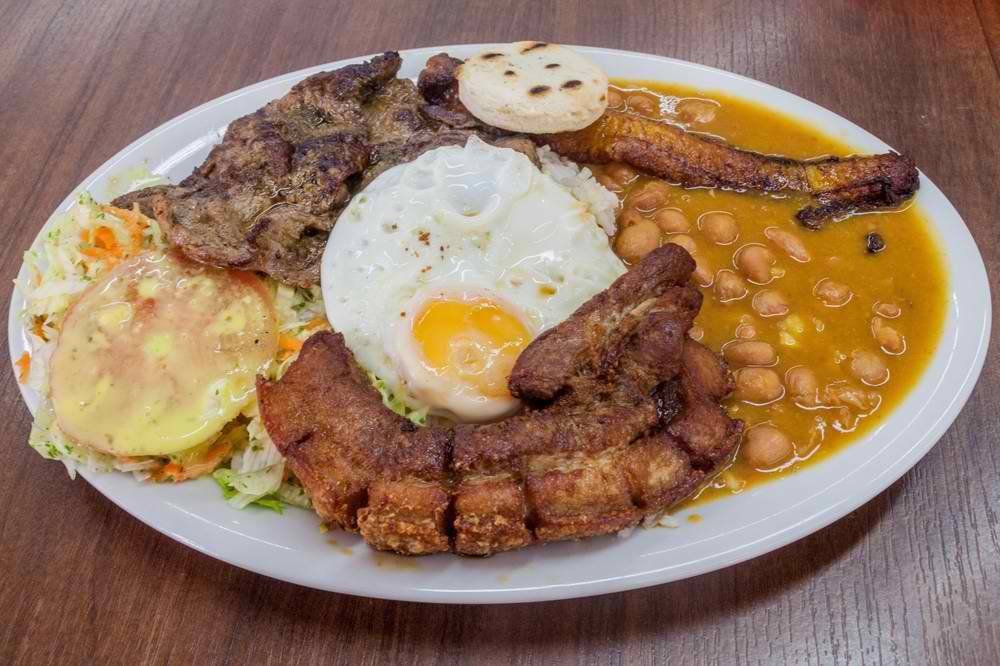
Generally speaking the food in Colombia is safe to eat. It’s more than safe to eat – it’s delightful too. But in order to avoid getting sick, here are a few simple rules to follow to make sure you’ll be eating the tastiest and safest grub when going.
- Don’t rush in ordering without thinking because you’re starving. Be hungry, that’s ok, but being starving makes you order quickly and without caring what it looks like or where it comes from. Have a sensible snack!
- Make sure that what you’re about to eat is freshly cooked and hot. Best of all, if it’s been cooked in front of you that’s a surefire sign that it’s all good.
- If the food looks like it’s been sitting around uncovered in the sun for some time – avoid. It may be crawling with germs.
- Avoid raw stuff: eggs, seafood, and meat. Raw eggs, well, these are hotbeds for bugs. Unless you can 100% guarantee that the fish or meat you’re eating is very fresh, it’s better to be safe than sorry.
- Fruit and vegetables are tasty. But unpeeled, unwashed, unboiled vegetables or fruit can be risky. Best avoided.
- A decent rule of thumb for any restaurant anywhere in the world: if it looks busy, there’s probably a good reason for that. It’s most likely delicious and safe to eat there.
- Learn a few Spanish phrases so that you can learn about what you’re ordering, how much of it you’ll be getting, and how much you’ll be paying. Portions are BIG here.
- Are you a vegetarian? Too bad… There’s a big focus on meat in the Colombian diet and you’ll often find it difficult to find a dish that DOESN’T have meat included. To avoid eating something you don’t want to, either learn some phrases to ask what dishes are meatless or learn which dishes are purely vegetarian.
- And an oldie but a goodie: wash your hands. An easy way to not get ill.
- Traveling with an allergy? Research ahead of time how to explain your allergy. Keep in mind that store owners and restaurant staff might not know all the foods that contain allergens, so it’s helpful to know the names of some of these too. If you’re gluten-free, pick up a handy Gluten-Free Translation Card with descriptions of Celiac disease, cross-contamination risk, and local Columbian ingredients in Latin American Spanish.
Food in Colombia is safe to eat; safe and delicious. If you’re into big portions, you’ll love it here. If you’re a vegetarian… less so. It’s even safer if you’re sensible about WHAT and WHERE you choose to eat. You’ll have a blast exploring the local food stalls without worrying.
Can you drink the water in Colombia?
This may surprise you, but the tap water in Colombia is safe to drink in many towns and cities. However, this is certainly not the case in all of them. As a rule of thumb, avoid it at least until you have checked with a few locals and other backpackers.
In rural areas you’ll be able to buy a big bottle of water quite cheaply, so you shouldn’t worry about staying hydrated.
Your hotel or hostel also may have a water filter. If so, reuse your bottles. Better yet: save the Earth and have your own water bottle, to begin with. Look into buying a good bottle, like the Grayl Geopress Water Bottle, that can keep your water cool and take a beating at the same time.
Colombia is working on their water systems and water treatment is improving. Other cities and areas in Colombia may soon follow in the same suit as Bogota and other areas.
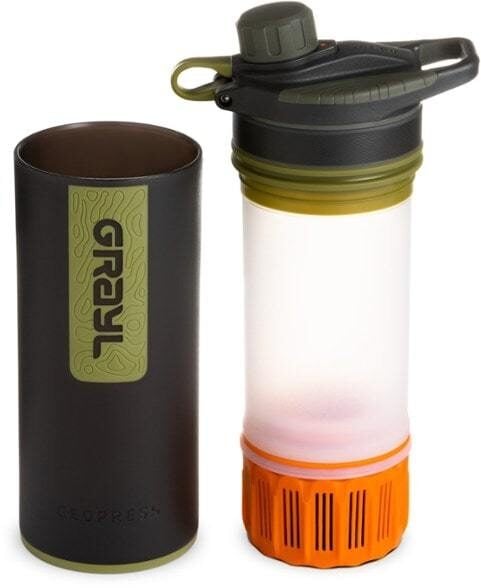
Drink water from ANYWHERE. The Grayl Geopress is the market’s leading filtered water bottle protecting your tum from all the waterborne nasties. PLUS, you save money and the environment!
Single-use plastic bottles are a MASSIVE threat to marine life. Be a part of the solution and travel with a filter water bottle.
We’ve tested the Geopress rigorously from the icy heights of Pakistan to the tropical jungles of Cuba, and the results are in: it WORKS. Buy a Geopress: it’s the last water bottle you’ll ever buy.
Is Colombia safe to live in?
We’ve asked is Colombia dangerous for tourists but now let’s look at expats. In recent years there has been an increase in people making the leap and moving to Colombia. You’ll find digital nomads hanging out in Medellin and older expats who have retired to Santa Marta, all of them enticed by warmer climates, very nice people, and amazing scenery.
We really don’t blame you if you’re thinking of moving to Colombia. All we can think of is the good coffee!
Whilst Colombia is generally safe to live in, the safety in some cities, like Bogota’s safety for example, may feel a little restraining. There will only be certain parts of the city that you’ll truly feel safe in, away from more rundown or working class areas, which might make you feel a little limited in terms of how far you’re able to roam. If you’re looking for the safest(-ish) city, we’d recommend staying in Cartagena.
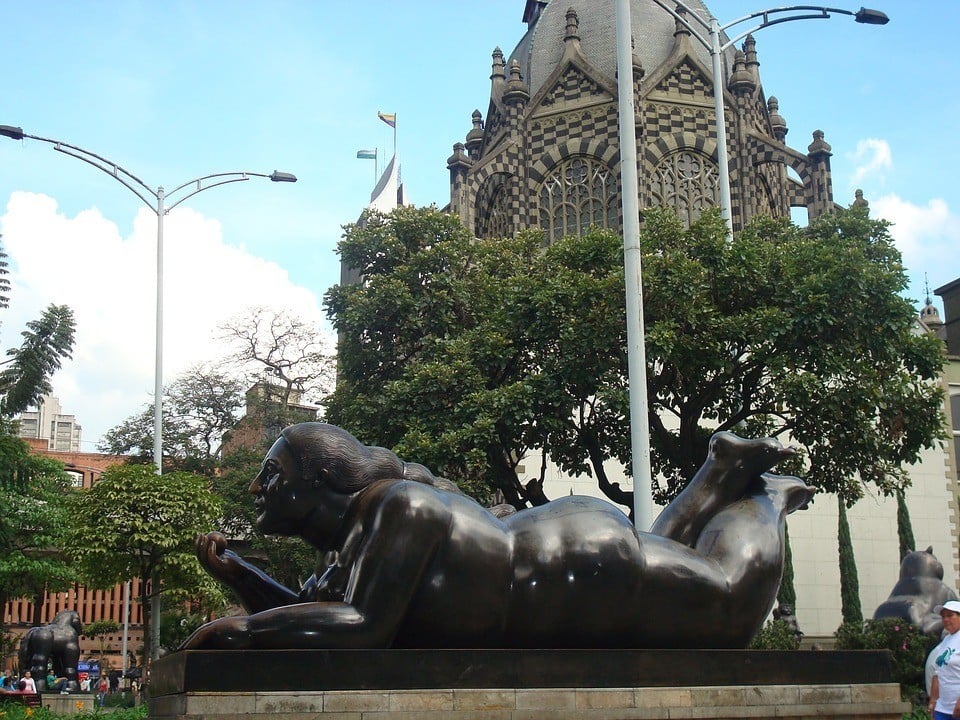
Someone’s having a good time!
Since you’ll (hopefully) be integrated into the community and won’t be sticking out as much as a tourist or even a backpacker, you won’t be falling prey to the same sort of petty theft that we’ve talked about in this article.
And whilst blending in is a plus, Spanish is a must. If you ever hope to get around, communicate with and eventually get to know Colombians, you’re going to have to speak their language.
It might not be as cheap as you think it’s going to be, but if you’re looking for a good climate and people to match, Colombia will be an adventure of a place.

A new country, a new contract, a new piece of plastic – booooring. Instead, buy an eSIM!
An eSIM works just like an app: you buy it, you download it, and BOOM! You’re connected. It’s just that easy.
Is your phone eSIM ready? Read about how e-Sims work or click below to see one of the top eSIM providers on the market and ditch the plastic .
Is it safe to rent an Airbnb in Colombia?
Renting an Airbnb in Colombia is a great idea. And it’s perfectly safe, as long as you read the reviews. Staying at an Airbnb during your trip will also open up new possibilities and options to experience the country. The local hosts are known to take great care of their guests and give the absolute best recommendations of what to do and what to see. Local knowledge always goes a long way, so be sure to reach out to your hosts if you’re unsure about how to fill up your Colombia itinerary!
On top of that, you’ll stay safe with the reliable Airbnb booking system. Both hosts and guests can rate each other which creates a very respectful and trustworthy interaction.
Is Colombia LGBTQ+ friendly?
We’re happy to announce that Colombia is actually really LGBTQ+ friendly. It’s one of the few countries in the region that even legalized same-sex marriage. While you can never fully avoid one or the other closed-minded idiot, you and your partner will almost always be accepted and welcomed with open arms. However, if you worry about your safety while travelling, try to keep physical affection behind closed doors – then you’ll be 100% safe.
The big cities in Colombia offer an insane nightlife targeted to members of the LGBTQ+ community. There are plenty of entertainment venues where you’ll be perfectly safe. During pride month, there are a few parades as well that you could attend. To find the best festivals and venues, simply reach out to groups on facebook or google for LGBTQ+ events in your region.
FAQ about Staying Safe in Colombia
Here are some quick answers to common questions about safety in Colombia.
Source https://www.thebrokebackpacker.com/is-colombia-safe/
Source
Source